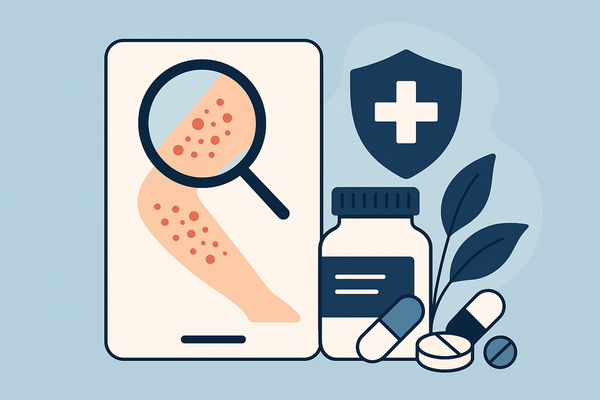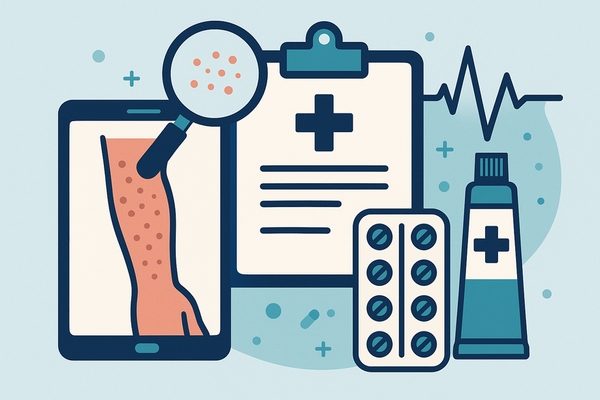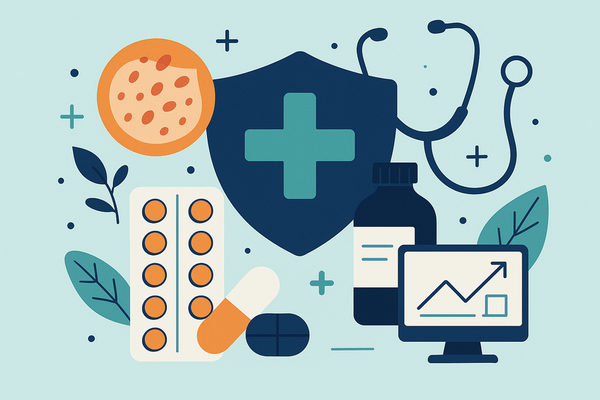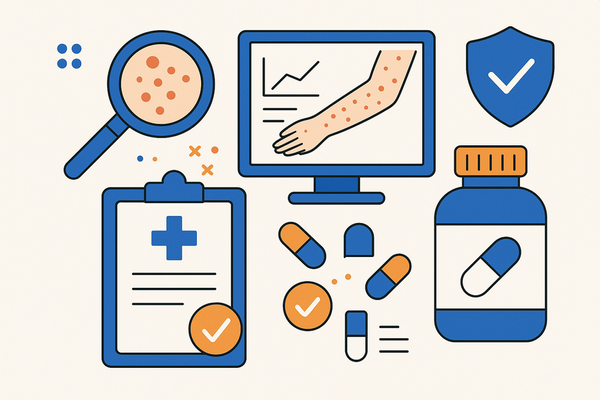Medication Rash Treatment: Complete Guide to Drug-Induced Rash Management
Learn effective medication rash treatment to prevent complications from drug-induced rashes. Identify symptoms and options for managing severe reactions.
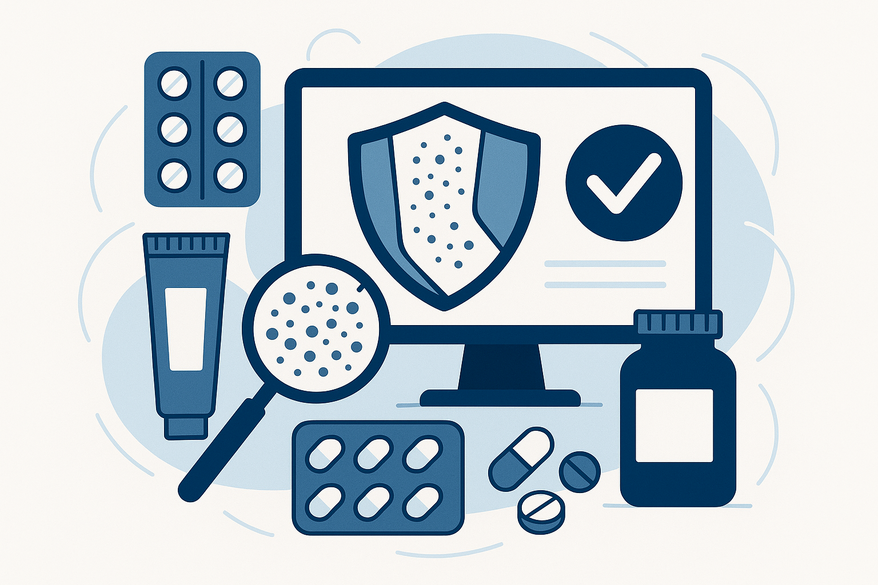
Estimated reading time: 7 minutes
Key Takeaways
- Early recognition of drug-induced rashes can prevent progression to severe conditions.
- Immediate actions: stop the offending medication under medical guidance.
- Pharmacologic and supportive care including antihistamines, corticosteroids, and skin barrier repair.
- Red flags such as blisters, mucosal involvement, or breathing difficulties warrant urgent attention.
- Prevention and follow-up through detailed allergy histories and patient-clinician communication.
Table of Contents
- Understanding Medication Rashes
- Identifying Medication-Induced Rashes
- Causes and Common Culprits
- Medication Rash Treatment
- When to Seek Medical Help
- Preventative Measures and Follow-Up Care
- Conclusion
Understanding Medication Rashes
A medication rash is a cutaneous response linked to the initiation of a new drug. Unlike eczema, psoriasis, or viral exanthems, a drug eruption has a clear timeline tied to medication start, making timely identification crucial to prevent escalation.
Identifying Medication-Induced Rashes
Spotting a drug rash early means faster, targeted treatment. Look for a symmetrical, widespread rash appearing days to weeks after starting therapy. For detailed signs and symptom timelines, visit identifying drug-induced rash symptoms.
Causes and Common Culprits
Certain medications carry higher risk: antibiotics (like sulfonamides), anticonvulsants, NSAIDs, and allopurinol. The reaction mechanism ranges from immune-complex deposition to T-cell–mediated hypersensitivity.
Medication Rash Treatment
For a detailed, step-by-step approach, refer to medication rash management.
Immediate Actions for Medication Rash Treatment
First, discontinue the suspected drug—always in consultation with the prescribing clinician, especially if it’s essential for your health.
Pharmacologic Therapies
Once the offending agent is paused, symptom relief focuses on:
- Antihistamines for intense itching
- Topical corticosteroids to calm localized inflammation
- Systemic corticosteroids when the rash is extensive or severe
- Immunomodulators (e.g., calcineurin inhibitors) under specialist supervision for resistant cases
Supportive and Adjunctive Care
Skin barrier support accelerates healing and reduces infection risk:
- Cool compresses to soothe irritation
- Fragrance-free moisturizers to restore barrier function
- Avoid scratching—keep nails trimmed or wear cotton gloves
Management of Severe Reactions
When life- or skin-integrity–threatening reactions occur—such as Stevens-Johnson syndrome (SJS) or toxic epidermal necrolysis (TEN)—treatment in a burn unit or intensive care setting is required.
When to Seek Medical Help
Act immediately if you experience:
- Rapidly spreading rash with fever and muscle aches
- Blistering, peeling skin, or mucosal ulcers
- Swelling of the face, tongue, or throat
- Signs of anaphylaxis (wheezing, lightheadedness)
Preventative Measures and Follow-Up Care
Prevention starts with a thorough medication allergy history. Clear communication with healthcare providers minimizes risks of re-exposure. For ongoing care strategies, see follow-up care tips.
Conclusion
A medication rash demands fast, focused action to avert serious outcomes. Early recognition, immediate drug cessation under guidance, and tailored therapy are the pillars of effective management. Consult your healthcare team promptly if a drug reaction is suspected.
For added confidence in early rash detection, consider using the Rash Detector, an AI skin analysis app that provides instant reports for symptom tracking and clinician sharing.
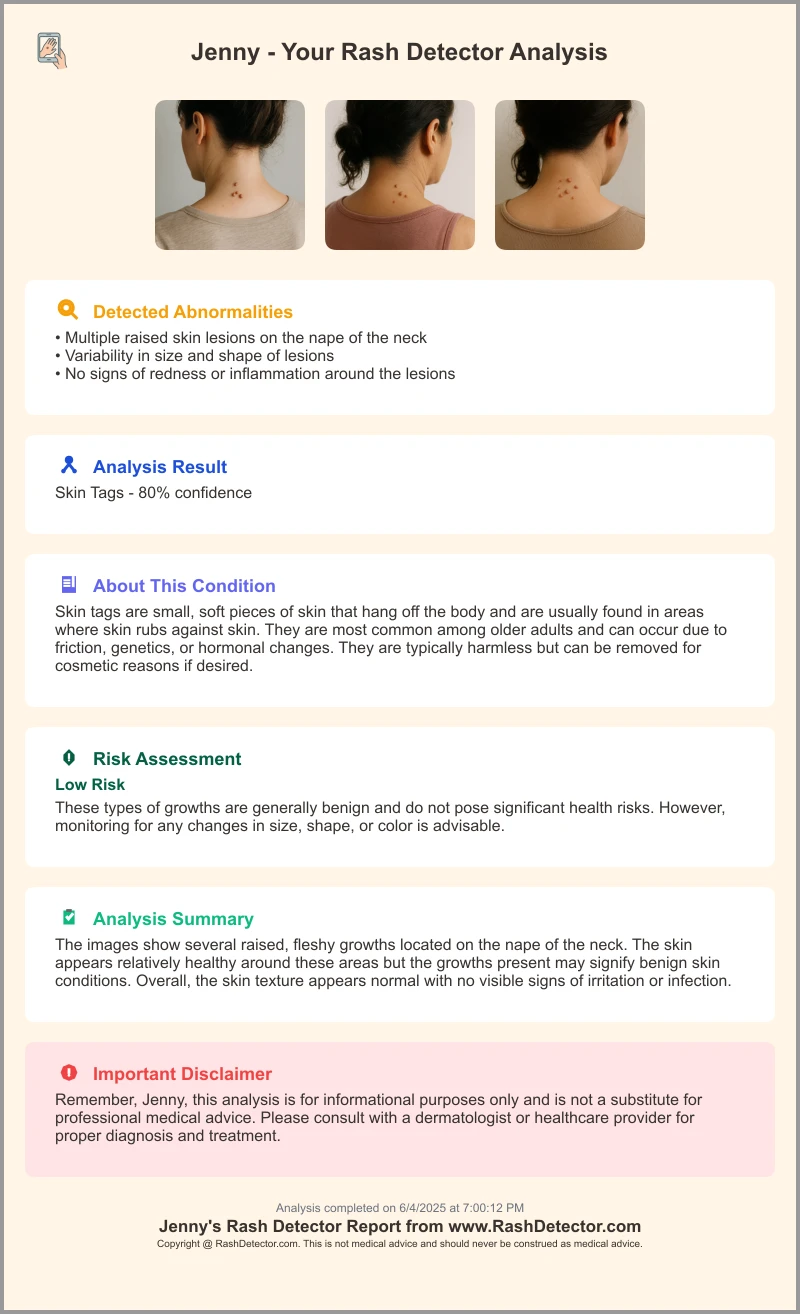
FAQ
- How quickly do medication rashes appear?
They typically emerge within days to weeks of starting a new drug, depending on the mechanism. - Can I treat a drug rash at home?
Mild rashes may respond to antihistamines and topical steroids, but medical evaluation is recommended. - Will I react again if I take the same medication?
Yes—re-exposure often triggers a faster and more severe response. Avoidance and allergy documentation are key.


